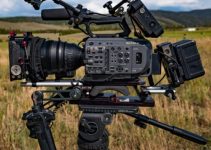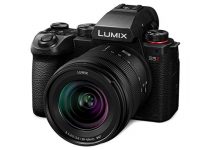Besides the Super Retina HD display, A11 Bionic chip with 64-bit architecture, wireless charging, and Face ID support, the latest iPhone X also brings to the table enhanced camera capabilities and more powerful video features including 4K recording at 60fps.
And while incremental camera upgrades are commonplace with each iteration of the iPhone, the iPhone X aims to take smartphone videography to a whole new level. In fact, the camera on the newcomer is so good that it earned a DxO Mark score of 97, even surpassing the image quality of front-runners such as the Samsung Galaxy Note 8 or Google Pixel 2.
With the ability to shoot up to 2160p 60fps while maintaining almost professional-grade images, you may be curious to find out how the iPhone X stands up to proper video cameras such as the Panasonic GH5. The co-founder of Fstoppers Lee Morris has already put the two rivals to the test as he shares his first-hand insight on the topic in the video below.
After quickly scrubbing through all side-by-side test shots, it’s safe to conclude that the iPhone X holds up surprisingly well to the GH5. With similarly sharp and clear images produced by each camera, it wouldn’t be a serious struggle to intercut footage from these otherwise completely different beasts.
One noticeable difference between the cameras, though, is the more vibrant colors baked into the images captured by the iPhone X. While this may look great to the average user, it certainly would pose a few challenges to content creators who are looking to dive into more serious color grading.
The tracking shots with the subject walking towards the moving cameras, on the other hand, also seem to be on par resulting in a steady and smooth video. If you look closer, however, you may be able to find some subtle jitters in the footage produced by the iPhone X’s built-in stabilization system. Nonetheless, it’s still impressive for a device with such lightweight form factor.
Don’t get me wrong, though. While the iPhone has made strides in terms of video quality, it is still no replacement for a proper camera like the GH5. For instance, if you zoom into the footage from both cameras, you will see fewer artifacts and an increase in detail from the GH5 mainly due to its ability to shoot at a higher bit rate while using less compressed codecs. Also, the image quality from the iPhone suffers in low-light more dramatically than the GH5, meaning that if you want usable images from the phone, you need to pump in as much light as possible.
Overall, every camera that exists is built with its own purpose for a specific audience. With the advancements Apple has made to the iPhone X camera and video capabilities, filmmakers now have an additional tool to add to their arsenal, which also fits in their pocket. So, whether you use it as a B Cam, emergency backup camera, gimbal rig camera, or even as a starter camera, the iPhone X has got you covered.
[source: Fstoppers]
Order Links:
Panasonic Lumix DC-GH5 Mirrorless Micro Four Thirds Digital Camera (Body Only)
Apple iPhone X, Fully Unlocked 5.8″, 64 GB – Silver
Disclaimer: As an Amazon Associate partner and participant in B&H and Adorama Affiliate programmes, we earn a small comission from each purchase made through the affiliate links listed above at no additional cost to you.




It may just be me but the Fstoppers guy always gives off such a cocky vibe.
Hahahahahahaha you guys are a pathetic rip off lol… Please come up with original content rather than copy other peoples concepts haha…
I think you need to look at the scores again because it definitely didn’t surpass the Pixel 2 in terms of image quality.